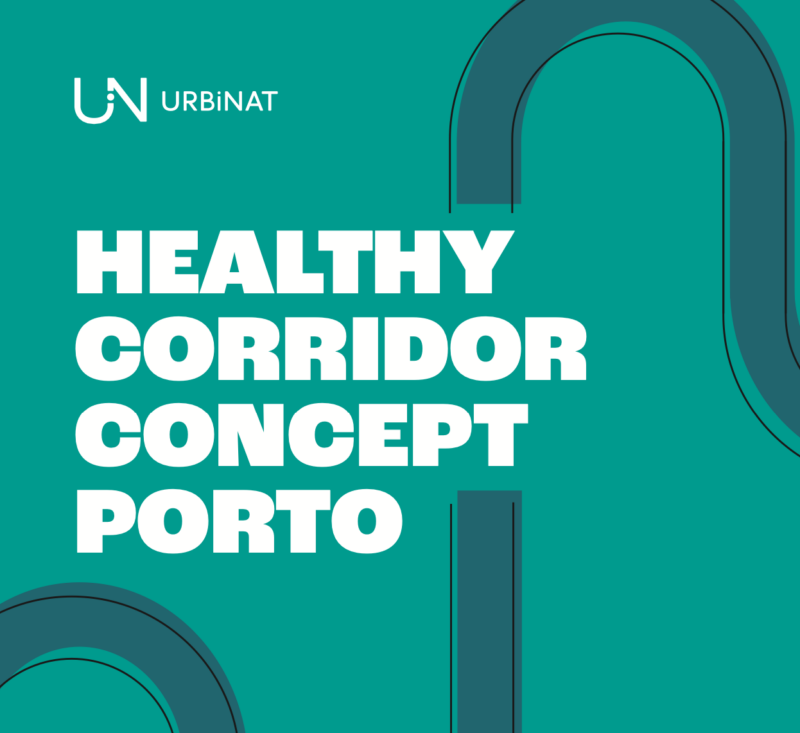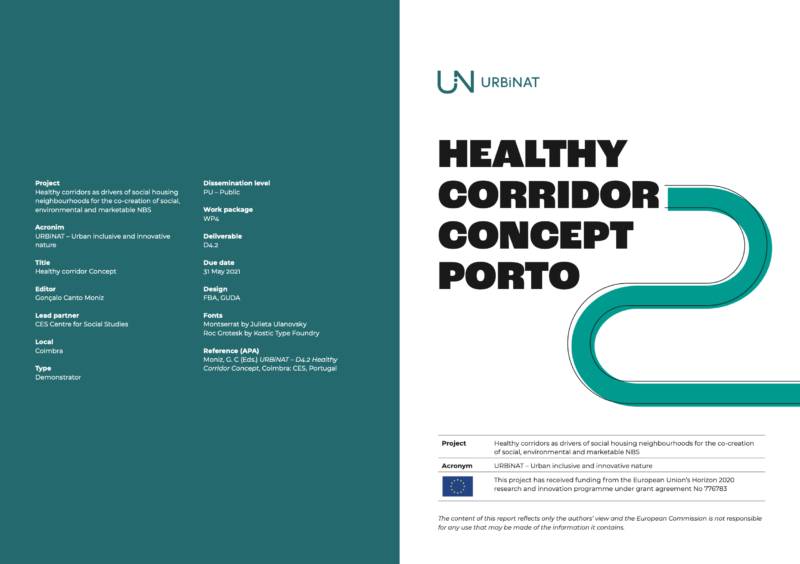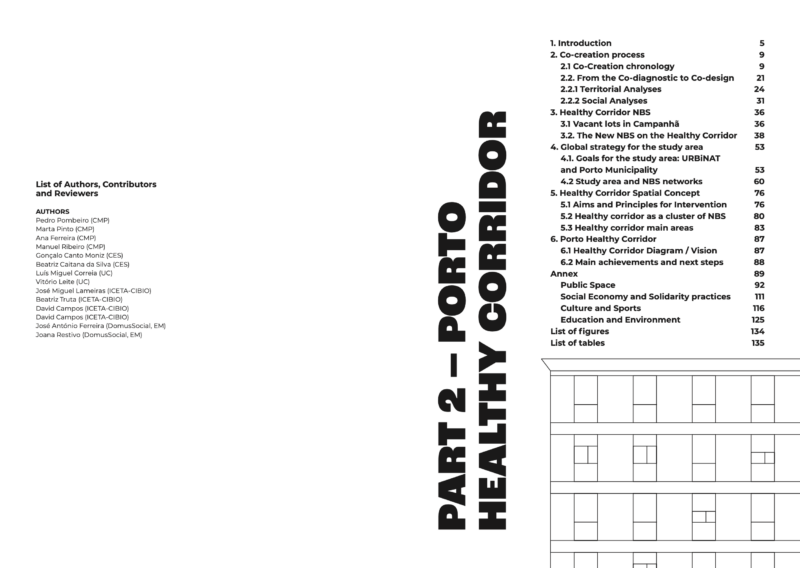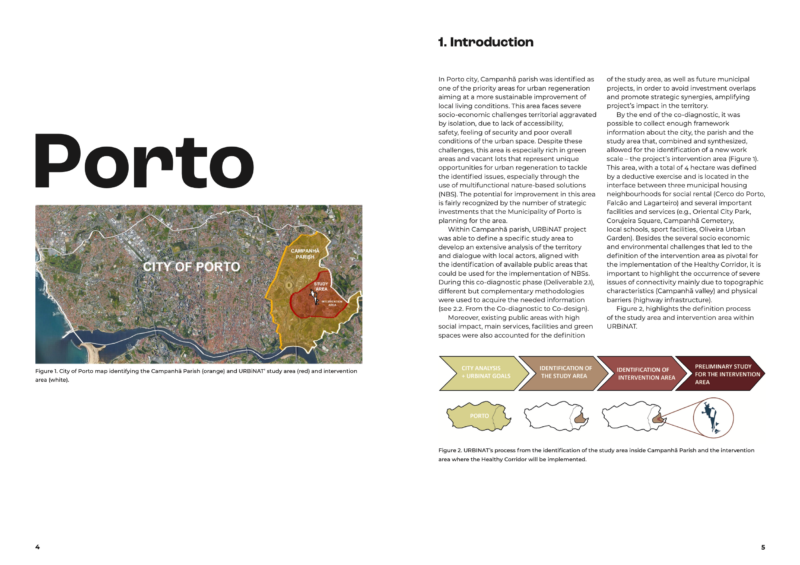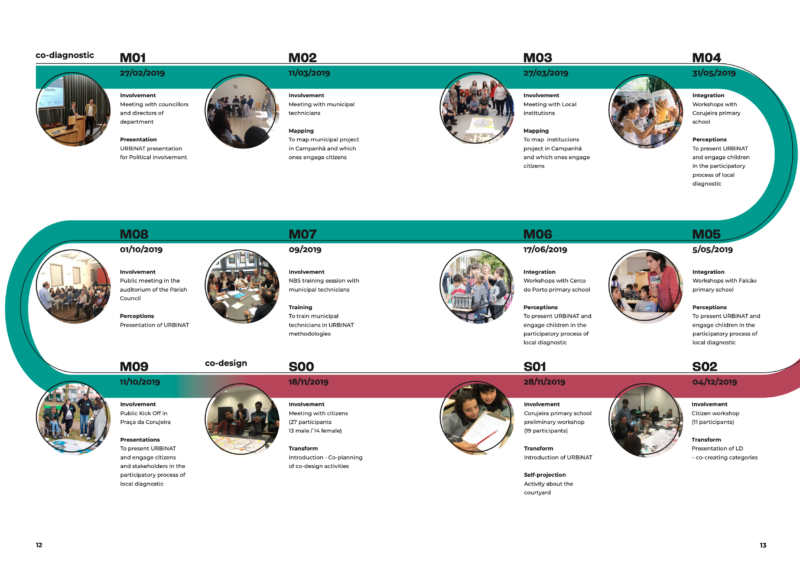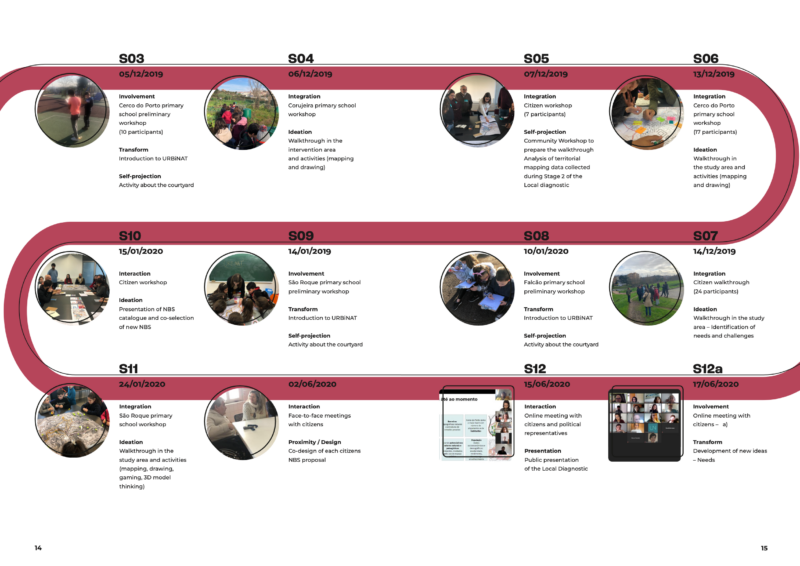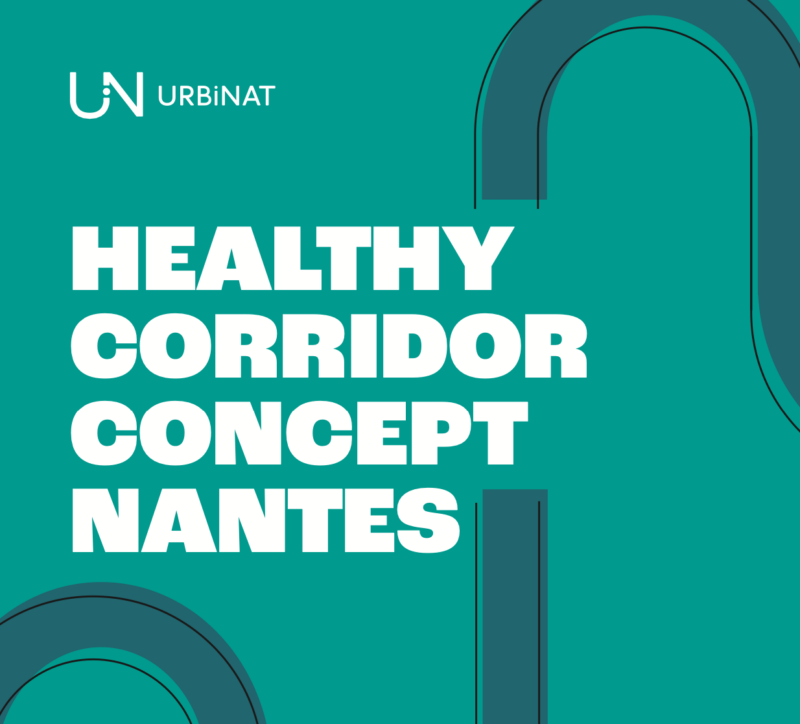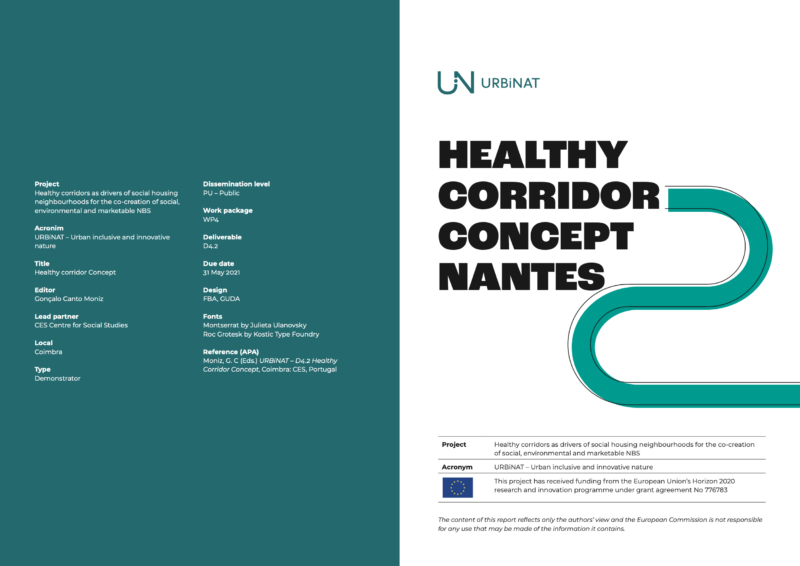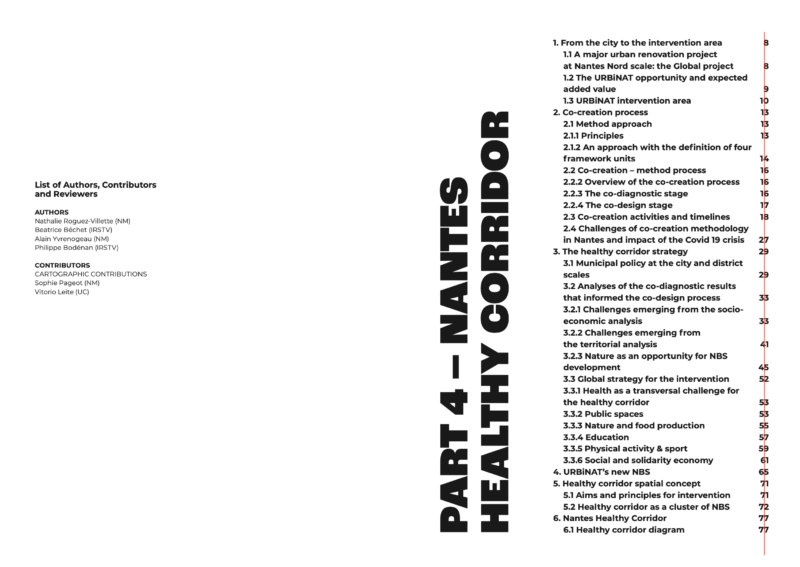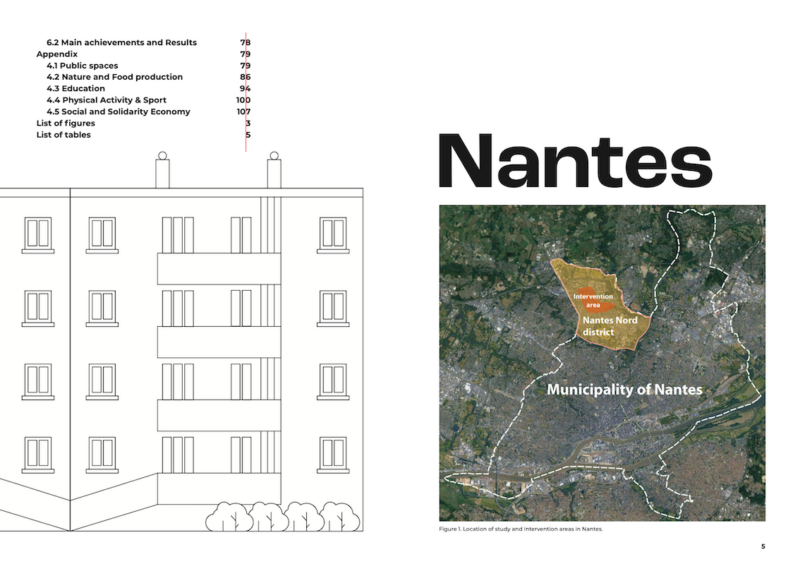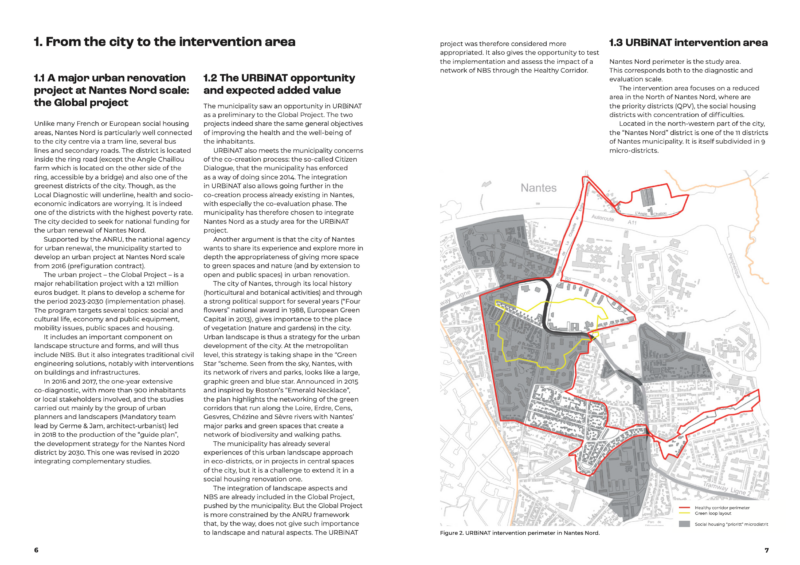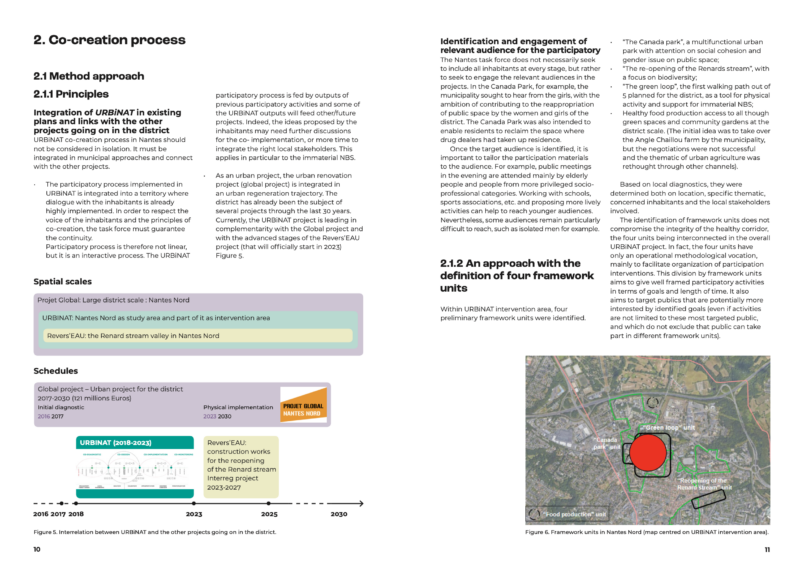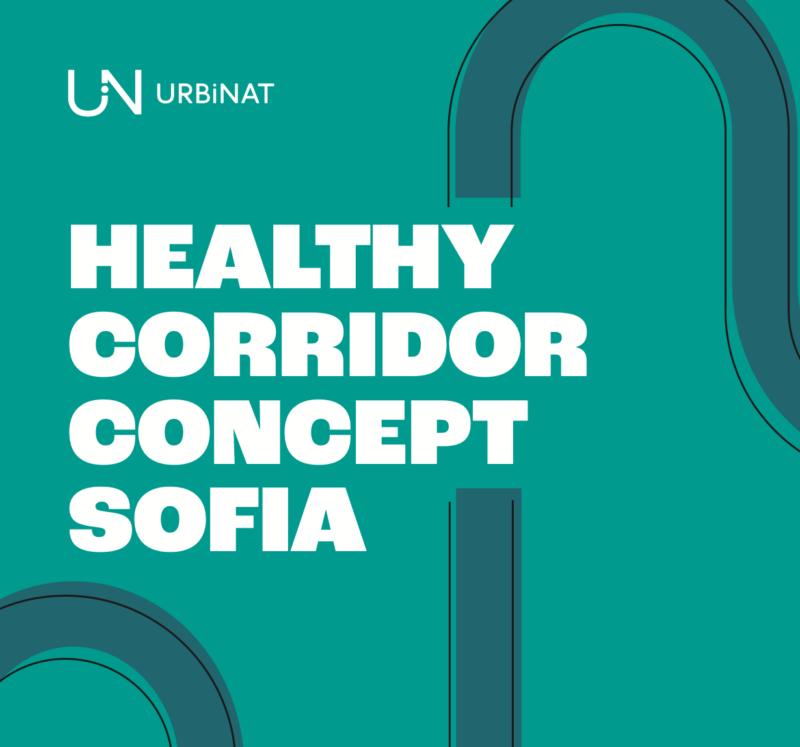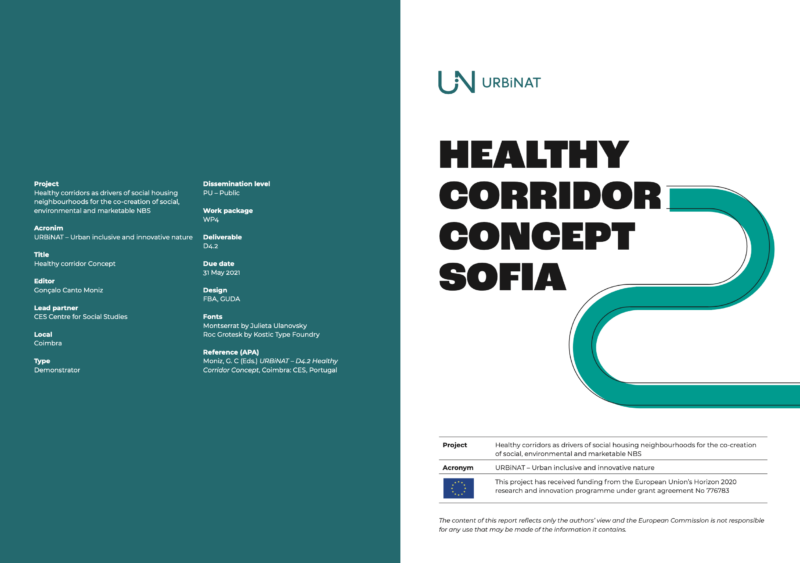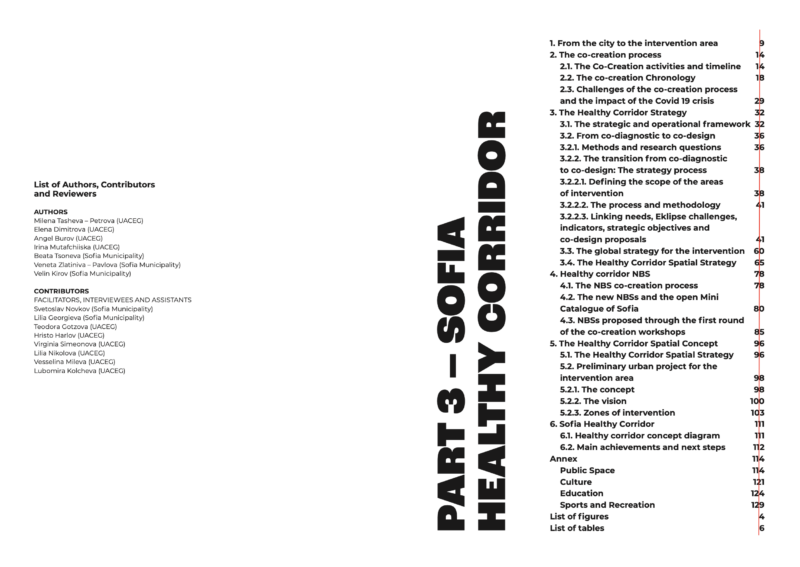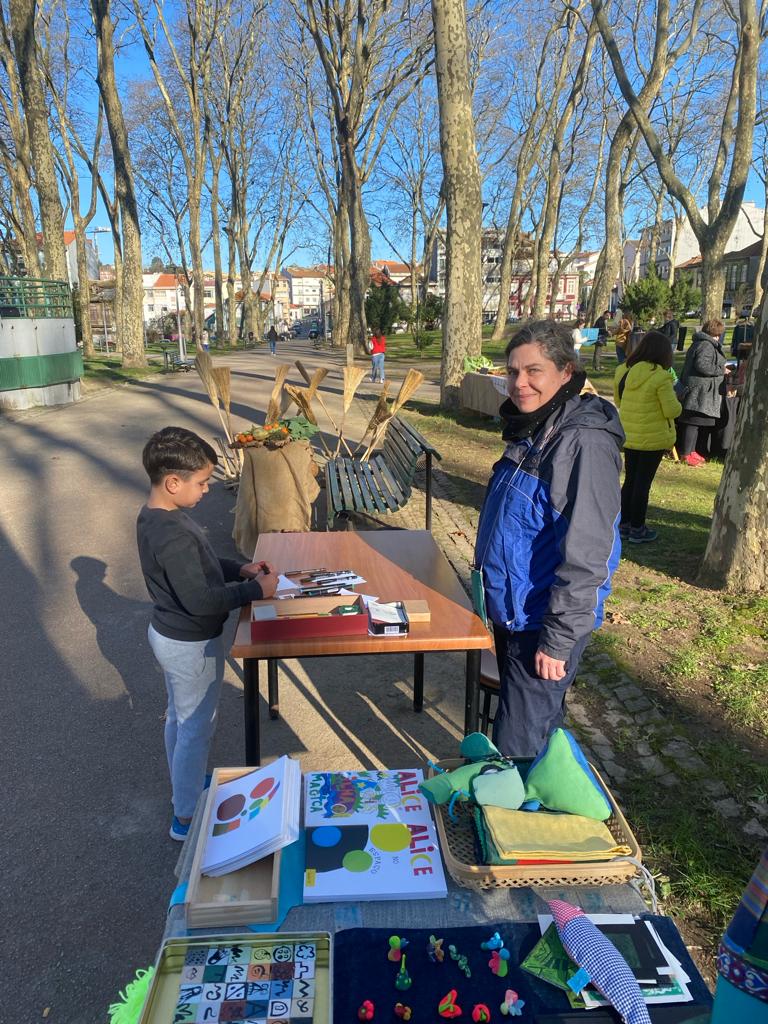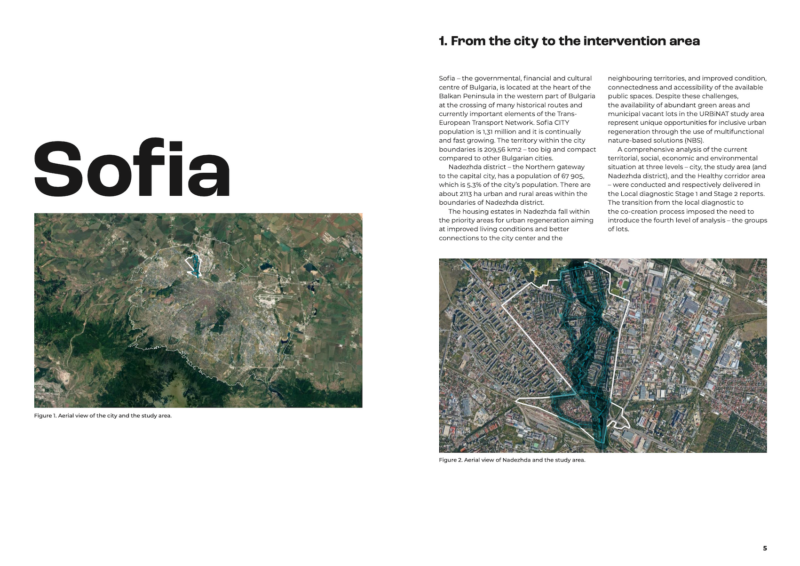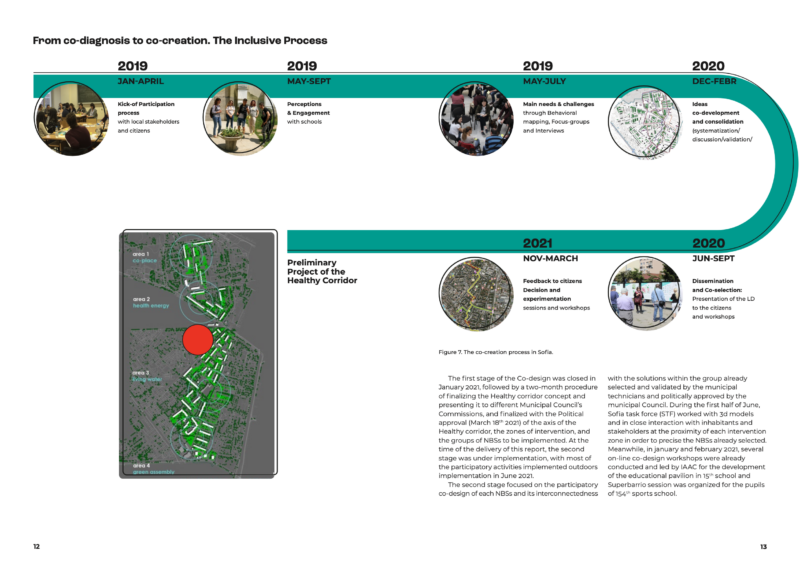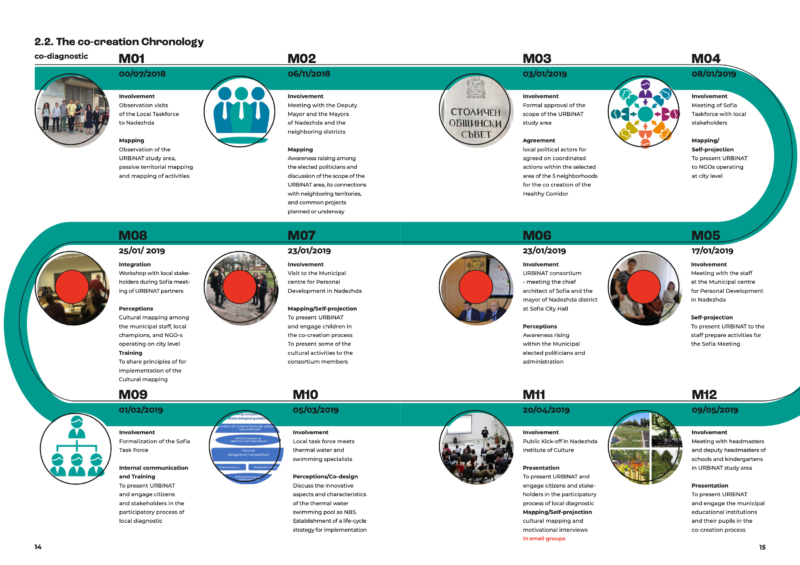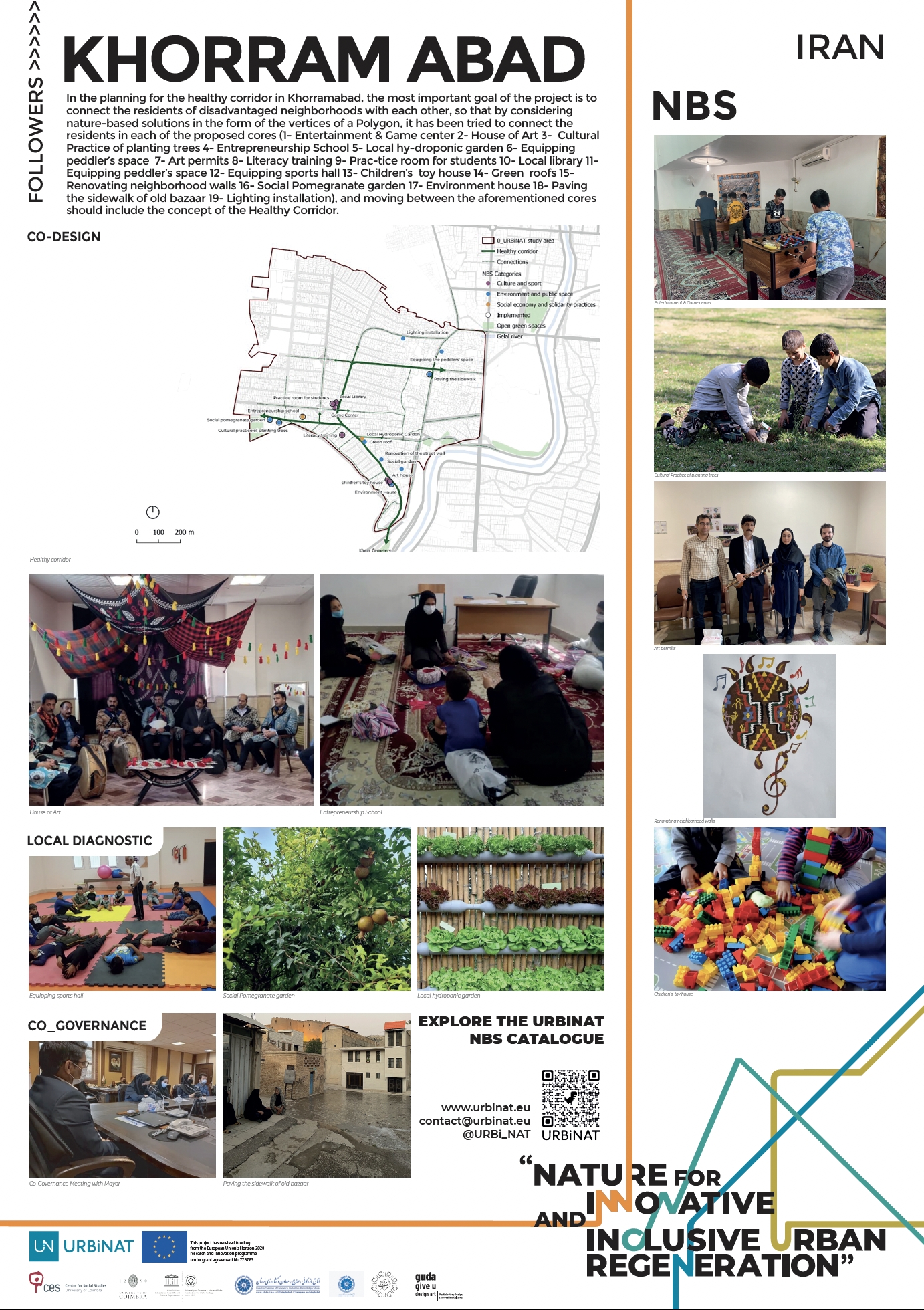
Milestone 4: Healthy Corridor Urban Plans
Milestone 4 : Healthy Corridor Urban Plans
Milestone 4 marks the completion of a key component in the co-planning and co-creation of the Healthy Corridor concept in URBiNAT three Frontrunner Cities, Porto, Nantes and Sofia. It also highlights the tangible actions taken by each city to integrate this sustainable urban strategy, showcasing the adaptability and collaborative spirit inherent in the URBiNAT project. This milestone relates closely the publication of Healthy Corridor Concepts by each Frontrunner City as presented below (and as compiled in a single report, Deliverable 4.2).
It is the result of collaborative efforts by frontrunner cities working in close coordination with local partners to embed the Healthy Corridor concept into their plans for the transformation of URBiNAT intervention areas. Central to this initiative is the co-creation process, a participatory approach engaging citizens, researchers, entrepreneurs, social scientists, urban environmental experts, technical staff, and elected officials to tailor each city’s urban planning and participation culture to the project’s goals.
The Healthy Corridor Concept
What is a Healthy Corridor?
Healthy Corridors are more than just the traditional green corridors that cross our cities, aiming instead to contribute to the overall health of the surrounding community.
The Healthy Corridor, as defined by URBiNAT, is a public space in the form of a pathway that connects and links neighbourhoods, integrating not only nature-based solutions but also human-centred ones, having an effect on the environment as well as on people’s health and wellbeing.
In this sense, the Healthy Corridor is a cluster of NBS that can occupy urban voids or common ground that is not being used or needs regeneration, becoming a link between different areas of the city, contributing to avoidance of the segregation effect and to the promotion of social and urban cohesion.
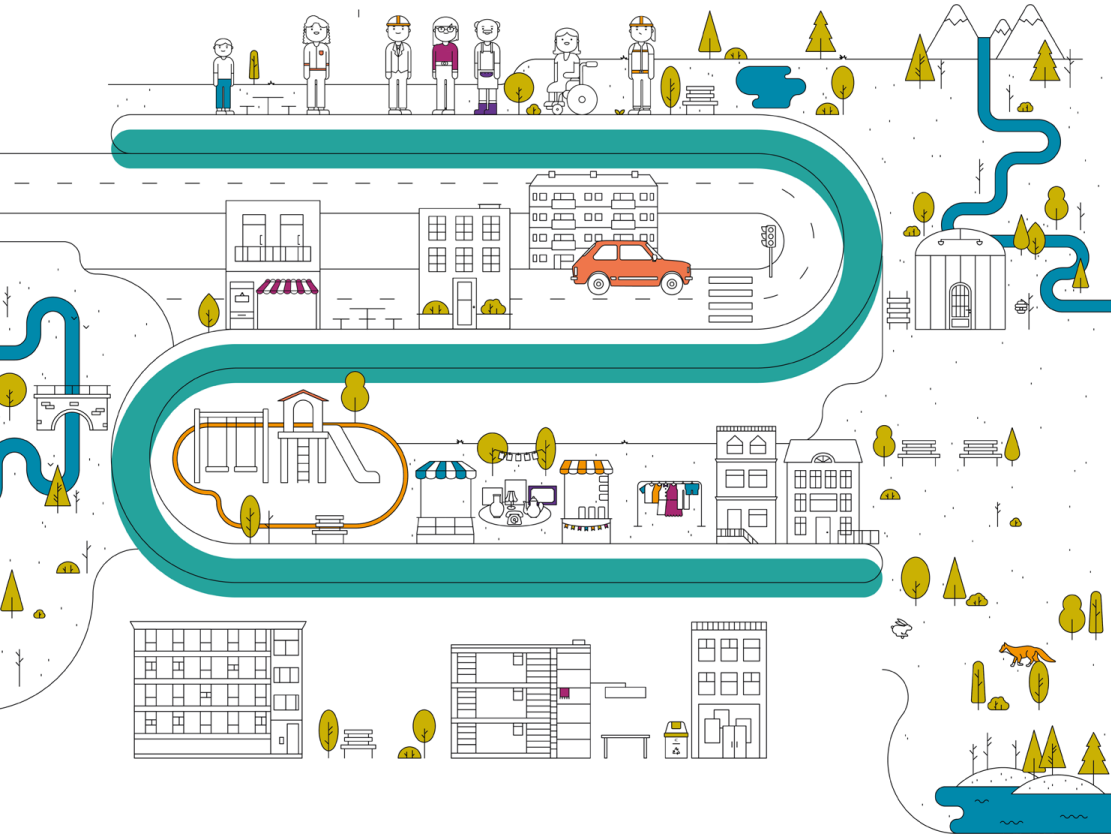
Healthy Corridor Concept (URBiNAT, 2020)
These NBS are organized in the four typologies Technical, Territorial, Participatory and Social & Solidarity Economy Nature-Based Solutions. More about the URBiNAT NBS Catalogue HERE
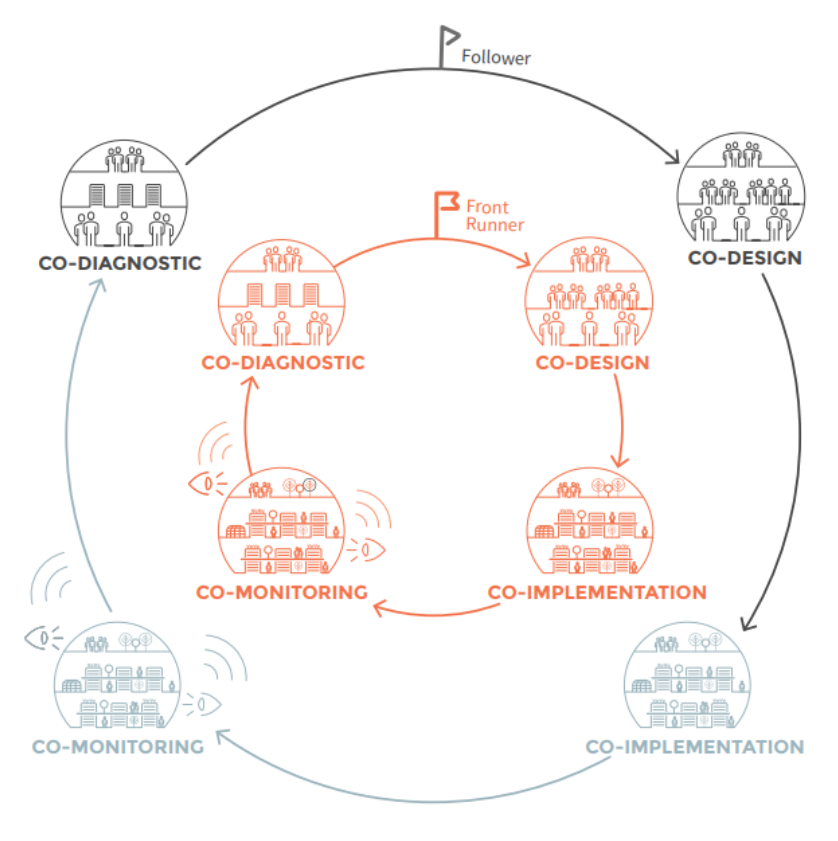
Co-creation Circular Process (URBiNAT, 2019)
Each stage of the co-creation circular process model proposes a set of actions to be adapted by each city, according to their local participatory culture and to the local social and political context.
Why Co-creation?
Co-creation is the process aiming to ensure inclusive urban regeneration “by and with the people” in order to involve and empower citizens and local actors in the several different stages of dialogue, interaction and decision making.
URBiNAT considers participation as both a means and an end. The URBiNAT co-creation circular process is a model based on a four-stage approach:
Local diagnosis | Co-diagnostic
The local diagnosis phase (co-diagnostic) characterises the area of intervention in territorial, social and economic terms.
The project | Co-design
The project phase (co-design) involves citizens in the process of building ideas and strategies, as well as in the design of solutions.
Construction | Co-implementation
The construction phase (co-implementation) invites citizens to participate in the production of solutions, through volunteer work or exchange of working hours.
Evaluation | Co-monitoring
The evaluation phase (co-monitoring) challenges citizens to convey the benefits and harms of the implemented solutions.
Publication of Urban Plans
Structured in four parts, D4.2 introduces the Healthy Corridor concepts and methodologies and provides an analysis of the outcomes achieved in each city. Parts 2, 3 and 4 offer case studies specific to Porto, Nantes, and Sofia, showcasing the stages in the co-planning and construction of the Healthy Corridor.
The document incorporates insights from mid-term reviews conducted by members of the URBiNAT scientific commission and internal reviewers, enriching the framework with questions, recommendations, and a call for a comparative analysis to underscore the unique achievements and impacts of green infrastructure on urban planning.
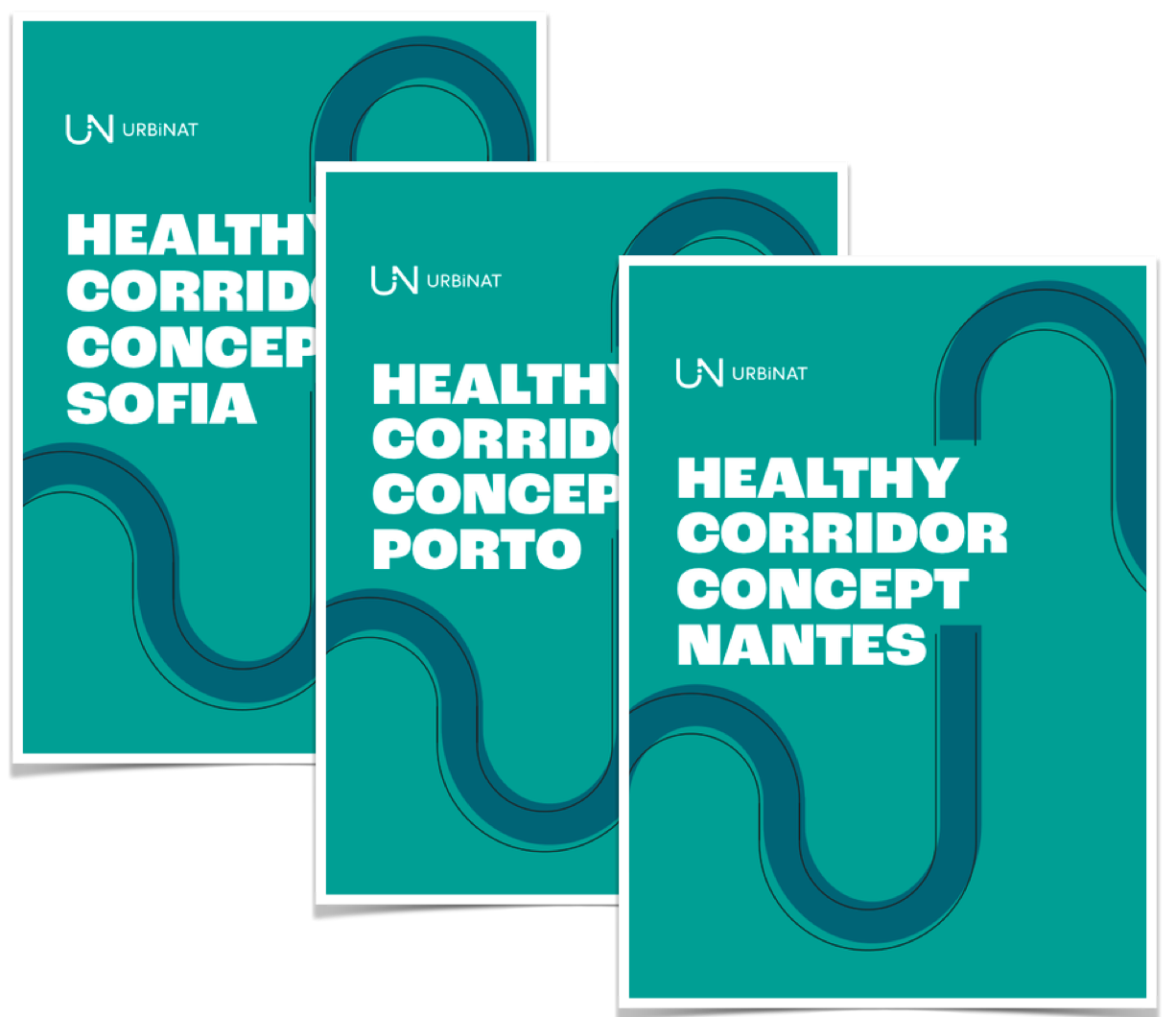
D4.2: URBiNAT Healthy Corridor Concept
The “Healthy corridor Concept” aims to establish the general framework of the healthy corridor urban plan (part 1) and present its application in the three front runners by the local task force: Porto (part 2), Sofia (part 3), Nantes (part 4). The general framework redefines the concepts, principles and the methodologies related with the healthy corridor urban plan, taking in consideration previous deliverables and integrating the experience acquired in the cities during the co-creation process
Porto
About Porto Healthy Corridor
In Porto city, Campanhã parish was identified as one of the priority areas for urban regeneration aiming at a more sustainable improvement oflocal living conditions. This area faces severe socio-economic challenges territorial aggravated by isolation, due to lack of accessibility,
safety, feeling of security and poor overall conditions of the urban space. Despite these challenges, this area is especially rich in green areas and vacant lots that represent unique opportunities for urban regeneration to tackle the identified issues, especially through the use of multifunctional nature-based solutions (NBS). The potential for improvement in this area is fairly recognized by the number of strategic investments that the Municipality of Porto is planning for the area.
Within Campanhã parish, URBiNAT project was able to define a specific study area to develop an extensive analysis of the territory and dialogue with local actors, aligned with the identification of available public areas that could be used for the implementation of NBSs. During this co-diagnostic phase (Deliverable 2.1),different but complementary methodologies were used to acquire the needed information (see 2.2. From the Co-diagnostic to Co-design).
Moreover, existing public areas with high social impact, main services, facilities and green spaces were also accounted for the definition of the study area, as well as future municipal projects, in order to avoid investment overlaps and promote strategic synergies, amplifying project’s impact in the territory.
By the end of the co-diagnostic, it was possible to collect enough framework information about the city, the parish and the study area that, combined and synthesized, allowed for the identification of a new work scale – the project’s intervention area.
By the end of the co-diagnostic, it was possible to collect enough framework information about the city, the parish and the study area that, combined and synthesized, allowed for the identification of a new work scale – the project’s intervention area. This area, with a total of 4 hectare was defined by a deductive exercise and is located in theinterface between three municipal housing neighbourhoods for social rental (Cerco do Porto, Falcão and Lagarteiro) and several important facilities and services (e.g., Oriental City Park, Corujeira Square, Campanhã Cemetery, local schools, sport facilities, Oliveira Urban Garden).
Besides the several socio economic and environmental challenges that led to the definition of the intervention area as pivotal for the implementation of the Healthy Corridor, it is important to highlight the occurrence of severe issues of connectivity mainly due to topographic characteristics (Campanhã valley) and physical barriers (highway infrastructure).
Download Porto Healthy Corridor Concept
4.2: Healthy Corridor Concept - PORTO
In Porto city, Campanhã parish was identified as one of the priority areas for urban regeneration aiming at a more sustainable improvement of local living conditions. This area faces severe socio-economic challenges territorial aggravated by isolation, due to lack of accessibility, safety, feeling of security and poor overall conditions of the urban space. Despite these challenges, this area is especially rich in green areas and vacant lots that represent unique opportunities for urban regeneration to tackle the identified issues, especially through the use of multifunctional nature-based solutions (NBS). The potential for improvement in this area is fairly recognized by the number of strategic investments that the Municipality of Porto is planning for the area.
Nantes
About Nantes Healthy Corridor
The municipality saw an opportunity in URBiNAT as a preliminary to the Global Project. The two projects indeed share the same general objectives of improving the health and the well-being of the inhabitants.
URBiNAT also meets the municipality concerns of the co-creation process: the so-called Citizen Dialogue, that the municipality has enforced as a way of doing since 2014. The integration
in URBiNAT also allows going further in the co-creation process already existing in Nantes, with especially the co-evaluation phase. Themunicipality has therefore chosen to integrate Nantes Nord as a study area for the URBiNAT project.
Another argument is that the city of Nantes wants to share its experience and explore more in depth the appropriateness of giving more space to green spaces and nature (and by extension to open and public spaces) in urban renovation.
The city of Nantes, through its local history (horticultural and botanical activities) and through a strong political support for several years (“Four flowers” national award in 1988, European Green Capital in 2013), gives importance to the place of vegetation (nature and gardens) in the city. Urban landscape is thus a strategy for the urban development of the city.
At the metropolitan level, this strategy is taking shape in the “Green Star “scheme. Seen from the sky, Nantes, with its network of rivers and parks, looks like a large, graphic green and blue star. Announced in 2015 and inspired by Boston’s “Emerald Necklace”,the plan highlights the networking of the green corridors that run along the Loire, Erdre, Cens, Gesvres, Chézine and Sèvre rivers with Nantes’ major parks and green spaces that create a network of biodiversity and walking paths.
Download Nantes Healthy Corridor Concept
4.2: Healthy Corridor Concept - NANTES
Nantes Nord perimeter is the study area. This corresponds both to the diagnostic and evaluation scale. The intervention area focuses on a reduced area in the North of Nantes Nord, where are the priority districts (QPV), the social housing districts with concentration of difficulties. Located in the north-western part of the city, the “Nantes Nord” district is one of the 11 districts of Nantes municipality. It is itself subdivided in 9 micro-districts.
Sofia
About Sofia Healthy Corridor
The location of the specific interventions related to the co-implementation of the NBSs is in about 20 vacant lots provisioned by the plans as part of the green infrastructure and public spaces in the four residential estates, namely Lev Tolstoy, Nadezhda 2 and 4 and Svoboda. The 2,5 km long axis of the Healthy corridor provides connection between Severen park and park Nadezhda and integrates important available territorial resources related to the major themes of the URBiNAT project – mobility, energy, water and nature.
The URBiNAT study area is 2,57 km2, while the intervention area has an overall surface of 1,43 km2 of which 5,6 ha is the area of the vacant municipal plots that obtained the highest scores when subjected to multicriteria evaluation. The indicative buffer area of the primary and secondary axes of the corridor is 138,1 ha. The area is mainly occupied by multifamily apartment housing constructed during the period of Centralized planning and predominantly built between the 1950-80s. The pedestrian paths and open spaces vary in terms of actual and planned significance and use. Most often there are narrow streets and informal unpaved paths as well as inter-block vacant and partially underutilized lots.
Among the main constraints are the poor pedestrian connectivity and contested spaces due to high motorization rate and density of occupation as well as many abandoned, marginalized and unattended plots.
The main opportunity is the implementation of major improvements in the large green open public space such as public works, playgrounds and social spaces that can help the area to overcome its long restructuring both in environmental and social-economic terms.
Furthermore, stimulation of participatory culture and solidarity networks can have a synergistic effect when combined with the physical improvements based on the self-confidence of the inhabitants and their attachment with the place.
Download Sofia Healthy Corridor Concept
4.2: Healthy Corridor Concept - SOFIA
The core of the intervention area is under final estimations and will be precisely defined after the co-design of the NBSs and the zones of intervention. The location of the specific interventions related to the co-implementation of the NBSs is in about 20 vacant lots provisioned by the plans as part of the green infrastructure and public spaces in the four residential estates, namely Lev Tolstoy, Nadezhda 2 and 4 and Svoboda. The 2,5 km long axis of the Healthy corridor provides connection between Severen park and park Nadezhda and integrates important available territorial resources related to the major themes of the URBiNAT project – mobility, energy, water and nature.


